Analysis of Board and Shareholder Power in Corporate Law: A Case Study of Waldmart Ltd
VerifiedAdded on 2023/06/05
|10
|2942
|247
AI Summary
This report analyzes the power available to the board and shareholders in relation to the issue of shares and dividend payments in Waldmart Ltd. It discusses the provisions for passing a resolution against a decision made by the board and the '2 strikes' rule for executive salaries. The report also explains the requirements for filing complaints against the management and the concept of harmonizing the interests of diverse classes of shareholders. The subject of the report is Corporate Law, the course code is BLO 2205, and it is prepared for Victoria University.
Contribute Materials
Your contribution can guide someone’s learning journey. Share your
documents today.
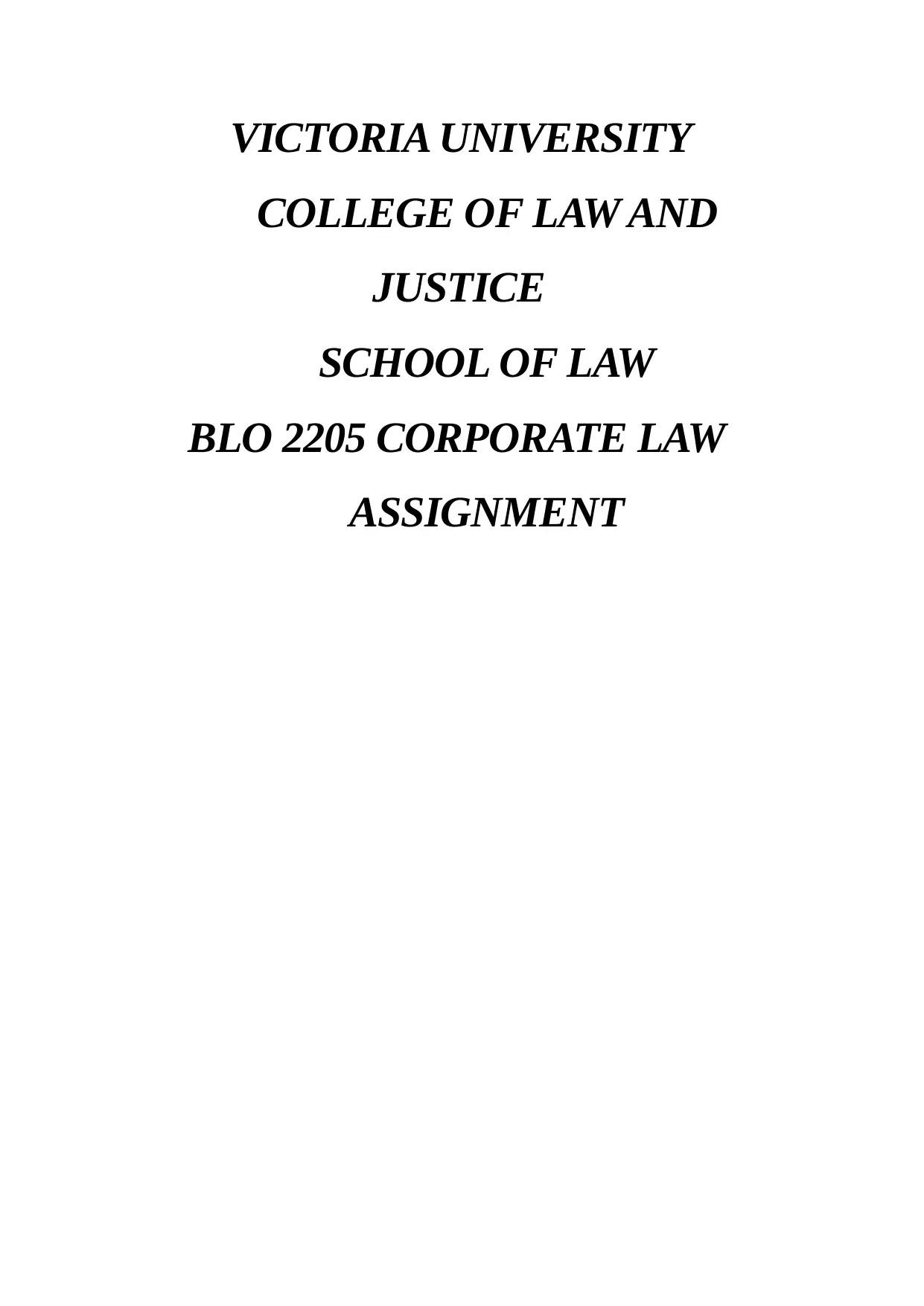
VICTORIA UNIVERSITY
COLLEGE OF LAW AND
JUSTICE
SCHOOL OF LAW
BLO 2205 CORPORATE LAW
ASSIGNMENT
COLLEGE OF LAW AND
JUSTICE
SCHOOL OF LAW
BLO 2205 CORPORATE LAW
ASSIGNMENT
Secure Best Marks with AI Grader
Need help grading? Try our AI Grader for instant feedback on your assignments.
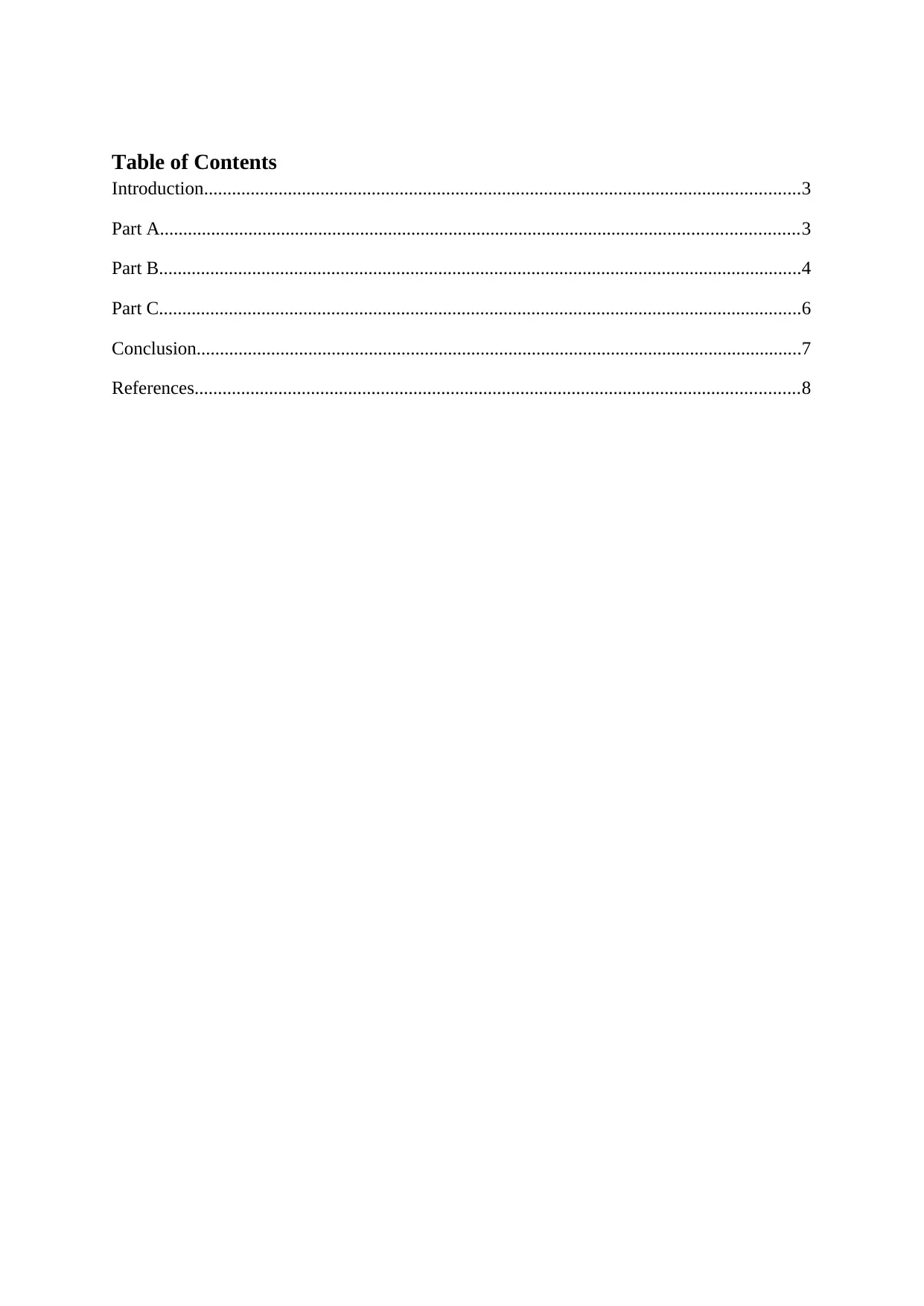
Table of Contents
Introduction................................................................................................................................3
Part A.........................................................................................................................................3
Part B..........................................................................................................................................4
Part C..........................................................................................................................................6
Conclusion..................................................................................................................................7
References..................................................................................................................................8
Introduction................................................................................................................................3
Part A.........................................................................................................................................3
Part B..........................................................................................................................................4
Part C..........................................................................................................................................6
Conclusion..................................................................................................................................7
References..................................................................................................................................8
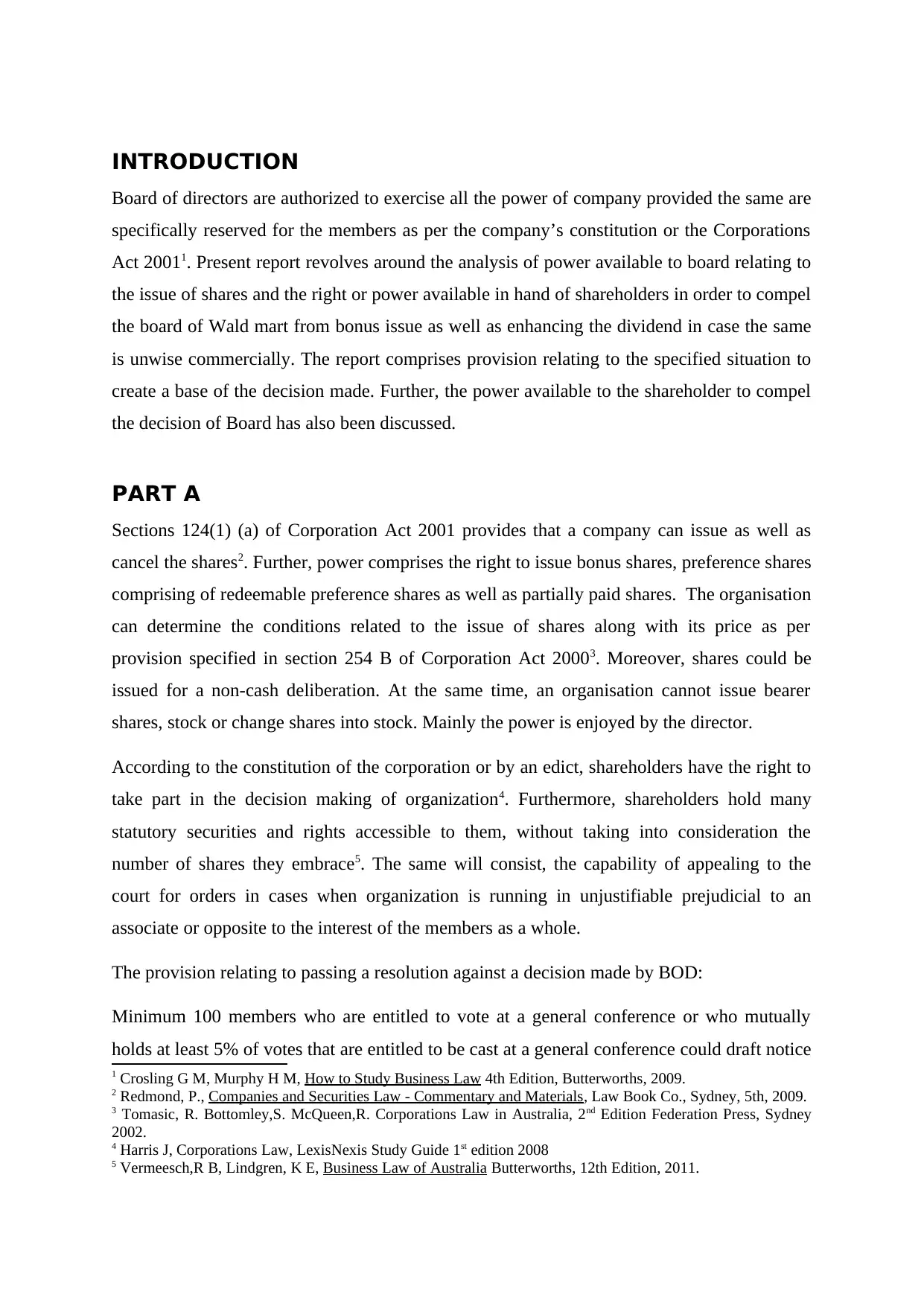
INTRODUCTION
Board of directors are authorized to exercise all the power of company provided the same are
specifically reserved for the members as per the company’s constitution or the Corporations
Act 20011. Present report revolves around the analysis of power available to board relating to
the issue of shares and the right or power available in hand of shareholders in order to compel
the board of Wald mart from bonus issue as well as enhancing the dividend in case the same
is unwise commercially. The report comprises provision relating to the specified situation to
create a base of the decision made. Further, the power available to the shareholder to compel
the decision of Board has also been discussed.
PART A
Sections 124(1) (a) of Corporation Act 2001 provides that a company can issue as well as
cancel the shares2. Further, power comprises the right to issue bonus shares, preference shares
comprising of redeemable preference shares as well as partially paid shares. The organisation
can determine the conditions related to the issue of shares along with its price as per
provision specified in section 254 B of Corporation Act 20003. Moreover, shares could be
issued for a non-cash deliberation. At the same time, an organisation cannot issue bearer
shares, stock or change shares into stock. Mainly the power is enjoyed by the director.
According to the constitution of the corporation or by an edict, shareholders have the right to
take part in the decision making of organization4. Furthermore, shareholders hold many
statutory securities and rights accessible to them, without taking into consideration the
number of shares they embrace5. The same will consist, the capability of appealing to the
court for orders in cases when organization is running in unjustifiable prejudicial to an
associate or opposite to the interest of the members as a whole.
The provision relating to passing a resolution against a decision made by BOD:
Minimum 100 members who are entitled to vote at a general conference or who mutually
holds at least 5% of votes that are entitled to be cast at a general conference could draft notice
1 Crosling G M, Murphy H M, How to Study Business Law 4th Edition, Butterworths, 2009.
2 Redmond, P., Companies and Securities Law - Commentary and Materials, Law Book Co., Sydney, 5th, 2009.
3 Tomasic, R. Bottomley,S. McQueen,R. Corporations Law in Australia, 2nd Edition Federation Press, Sydney
2002.
4 Harris J, Corporations Law, LexisNexis Study Guide 1st edition 2008
5 Vermeesch,R B, Lindgren, K E, Business Law of Australia Butterworths, 12th Edition, 2011.
Board of directors are authorized to exercise all the power of company provided the same are
specifically reserved for the members as per the company’s constitution or the Corporations
Act 20011. Present report revolves around the analysis of power available to board relating to
the issue of shares and the right or power available in hand of shareholders in order to compel
the board of Wald mart from bonus issue as well as enhancing the dividend in case the same
is unwise commercially. The report comprises provision relating to the specified situation to
create a base of the decision made. Further, the power available to the shareholder to compel
the decision of Board has also been discussed.
PART A
Sections 124(1) (a) of Corporation Act 2001 provides that a company can issue as well as
cancel the shares2. Further, power comprises the right to issue bonus shares, preference shares
comprising of redeemable preference shares as well as partially paid shares. The organisation
can determine the conditions related to the issue of shares along with its price as per
provision specified in section 254 B of Corporation Act 20003. Moreover, shares could be
issued for a non-cash deliberation. At the same time, an organisation cannot issue bearer
shares, stock or change shares into stock. Mainly the power is enjoyed by the director.
According to the constitution of the corporation or by an edict, shareholders have the right to
take part in the decision making of organization4. Furthermore, shareholders hold many
statutory securities and rights accessible to them, without taking into consideration the
number of shares they embrace5. The same will consist, the capability of appealing to the
court for orders in cases when organization is running in unjustifiable prejudicial to an
associate or opposite to the interest of the members as a whole.
The provision relating to passing a resolution against a decision made by BOD:
Minimum 100 members who are entitled to vote at a general conference or who mutually
holds at least 5% of votes that are entitled to be cast at a general conference could draft notice
1 Crosling G M, Murphy H M, How to Study Business Law 4th Edition, Butterworths, 2009.
2 Redmond, P., Companies and Securities Law - Commentary and Materials, Law Book Co., Sydney, 5th, 2009.
3 Tomasic, R. Bottomley,S. McQueen,R. Corporations Law in Australia, 2nd Edition Federation Press, Sydney
2002.
4 Harris J, Corporations Law, LexisNexis Study Guide 1st edition 2008
5 Vermeesch,R B, Lindgren, K E, Business Law of Australia Butterworths, 12th Edition, 2011.
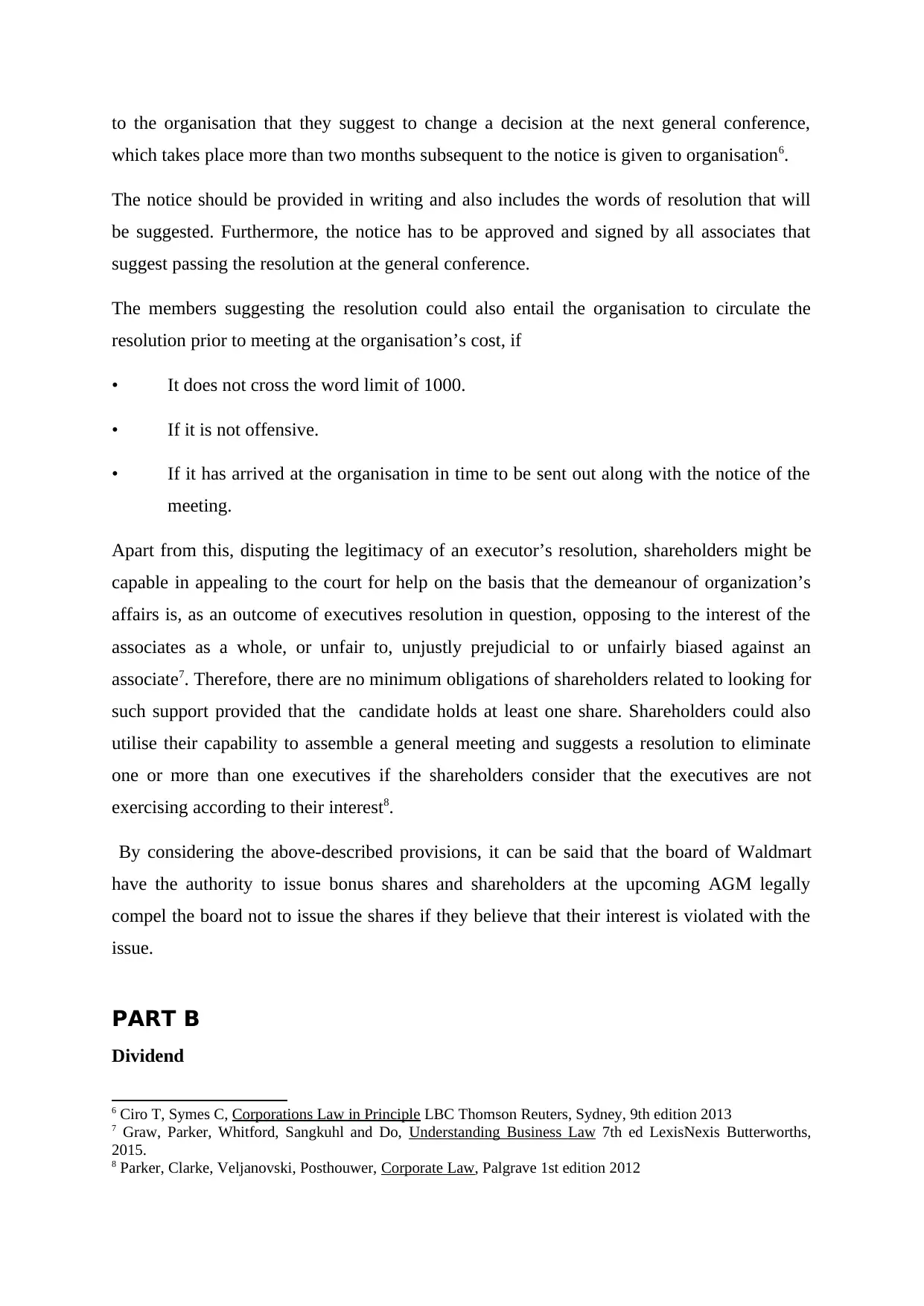
to the organisation that they suggest to change a decision at the next general conference,
which takes place more than two months subsequent to the notice is given to organisation6.
The notice should be provided in writing and also includes the words of resolution that will
be suggested. Furthermore, the notice has to be approved and signed by all associates that
suggest passing the resolution at the general conference.
The members suggesting the resolution could also entail the organisation to circulate the
resolution prior to meeting at the organisation’s cost, if
• It does not cross the word limit of 1000.
• If it is not offensive.
• If it has arrived at the organisation in time to be sent out along with the notice of the
meeting.
Apart from this, disputing the legitimacy of an executor’s resolution, shareholders might be
capable in appealing to the court for help on the basis that the demeanour of organization’s
affairs is, as an outcome of executives resolution in question, opposing to the interest of the
associates as a whole, or unfair to, unjustly prejudicial to or unfairly biased against an
associate7. Therefore, there are no minimum obligations of shareholders related to looking for
such support provided that the candidate holds at least one share. Shareholders could also
utilise their capability to assemble a general meeting and suggests a resolution to eliminate
one or more than one executives if the shareholders consider that the executives are not
exercising according to their interest8.
By considering the above-described provisions, it can be said that the board of Waldmart
have the authority to issue bonus shares and shareholders at the upcoming AGM legally
compel the board not to issue the shares if they believe that their interest is violated with the
issue.
PART B
Dividend
6 Ciro T, Symes C, Corporations Law in Principle LBC Thomson Reuters, Sydney, 9th edition 2013
7 Graw, Parker, Whitford, Sangkuhl and Do, Understanding Business Law 7th ed LexisNexis Butterworths,
2015.
8 Parker, Clarke, Veljanovski, Posthouwer, Corporate Law, Palgrave 1st edition 2012
which takes place more than two months subsequent to the notice is given to organisation6.
The notice should be provided in writing and also includes the words of resolution that will
be suggested. Furthermore, the notice has to be approved and signed by all associates that
suggest passing the resolution at the general conference.
The members suggesting the resolution could also entail the organisation to circulate the
resolution prior to meeting at the organisation’s cost, if
• It does not cross the word limit of 1000.
• If it is not offensive.
• If it has arrived at the organisation in time to be sent out along with the notice of the
meeting.
Apart from this, disputing the legitimacy of an executor’s resolution, shareholders might be
capable in appealing to the court for help on the basis that the demeanour of organization’s
affairs is, as an outcome of executives resolution in question, opposing to the interest of the
associates as a whole, or unfair to, unjustly prejudicial to or unfairly biased against an
associate7. Therefore, there are no minimum obligations of shareholders related to looking for
such support provided that the candidate holds at least one share. Shareholders could also
utilise their capability to assemble a general meeting and suggests a resolution to eliminate
one or more than one executives if the shareholders consider that the executives are not
exercising according to their interest8.
By considering the above-described provisions, it can be said that the board of Waldmart
have the authority to issue bonus shares and shareholders at the upcoming AGM legally
compel the board not to issue the shares if they believe that their interest is violated with the
issue.
PART B
Dividend
6 Ciro T, Symes C, Corporations Law in Principle LBC Thomson Reuters, Sydney, 9th edition 2013
7 Graw, Parker, Whitford, Sangkuhl and Do, Understanding Business Law 7th ed LexisNexis Butterworths,
2015.
8 Parker, Clarke, Veljanovski, Posthouwer, Corporate Law, Palgrave 1st edition 2012
Secure Best Marks with AI Grader
Need help grading? Try our AI Grader for instant feedback on your assignments.

The Section 2(35) of Companies Act defines the word dividend. As per the provisions, the
word dividend comprises any short-term dividend9. It is a comprehensive and not an
exhaustive definition10. As per generally approved defined, dividend refers to the revenue of
the organization, which is not preserved in the company and is allocated to the shareholders
in the ratio to the amount compensated on the shares detained by them.
Further, dividends are generally payable for a financial year subsequent to the preparation of
financial statement, and the amount of distributable revenue is accessible11. The dividend for
the financial year of the organization also called as a final dividend are due only if it is
proclaimed by the organization at its AGM that is Annual General Meeting on the suggestion
of Board12. In addition to this, sometimes dividends are also remunerated by the board among
two AGMs without proclaiming them at an AGM also called as interim dividend.
The provision relating to payment of dividend
1. The final dividend is usually fixed at AGM at a rate, not more than what is declared
by the executives along with the AOA of organization.
2. Section 134 (3) (k) states that the board should state the amount of dividend if any in
the Executives Report that is suggested to be recompensed. Further, the dividend
which is suggested by the board of directors should be proclaimed at the AGM. This
composes an item of Ordinary Business to be conducted at each AGM13.
3. Moreover, Section 132 (2) of Act or specifies that then there is no declaration of
dividend in the financial year when there is a loss. This implies that the dividend
should be paid only if the company has earned a profit after deducting depreciation or
out of the revenue of organization for any preceding financial year obtained
subsequent to deduction of depreciation, as per provisions of Section 123(1) above
subsection and continuing undistributed or out of both.
Section 254T (1) specifies that a company cannot declare a dividend in the following
circumstances:
9 Fisher S, Anderson C, Dickfos, Corporations Law - Butterworths Tutorial Series, 4th Edition Butterworths,
Sydney 2014
10 Hanrahan, P., Ramsay I., Stapledon G., Commercial Applications of Company Law. Oxford 18th edition 2017
11 Cassidy J., Corporations Law Text and Essential Cases. Federation Press, 4th edition Sydney 2013
12 Davenport, S and Parker D, Business and Law in Australia, Thomson Reuters, 2012
13 Tomasic, R.,Jackson, J.,Woellner, R., Corporations Law - Principles, Policy and Process 4th Edition
Butterworths., Sydney, 2002.
word dividend comprises any short-term dividend9. It is a comprehensive and not an
exhaustive definition10. As per generally approved defined, dividend refers to the revenue of
the organization, which is not preserved in the company and is allocated to the shareholders
in the ratio to the amount compensated on the shares detained by them.
Further, dividends are generally payable for a financial year subsequent to the preparation of
financial statement, and the amount of distributable revenue is accessible11. The dividend for
the financial year of the organization also called as a final dividend are due only if it is
proclaimed by the organization at its AGM that is Annual General Meeting on the suggestion
of Board12. In addition to this, sometimes dividends are also remunerated by the board among
two AGMs without proclaiming them at an AGM also called as interim dividend.
The provision relating to payment of dividend
1. The final dividend is usually fixed at AGM at a rate, not more than what is declared
by the executives along with the AOA of organization.
2. Section 134 (3) (k) states that the board should state the amount of dividend if any in
the Executives Report that is suggested to be recompensed. Further, the dividend
which is suggested by the board of directors should be proclaimed at the AGM. This
composes an item of Ordinary Business to be conducted at each AGM13.
3. Moreover, Section 132 (2) of Act or specifies that then there is no declaration of
dividend in the financial year when there is a loss. This implies that the dividend
should be paid only if the company has earned a profit after deducting depreciation or
out of the revenue of organization for any preceding financial year obtained
subsequent to deduction of depreciation, as per provisions of Section 123(1) above
subsection and continuing undistributed or out of both.
Section 254T (1) specifies that a company cannot declare a dividend in the following
circumstances:
9 Fisher S, Anderson C, Dickfos, Corporations Law - Butterworths Tutorial Series, 4th Edition Butterworths,
Sydney 2014
10 Hanrahan, P., Ramsay I., Stapledon G., Commercial Applications of Company Law. Oxford 18th edition 2017
11 Cassidy J., Corporations Law Text and Essential Cases. Federation Press, 4th edition Sydney 2013
12 Davenport, S and Parker D, Business and Law in Australia, Thomson Reuters, 2012
13 Tomasic, R.,Jackson, J.,Woellner, R., Corporations Law - Principles, Policy and Process 4th Edition
Butterworths., Sydney, 2002.
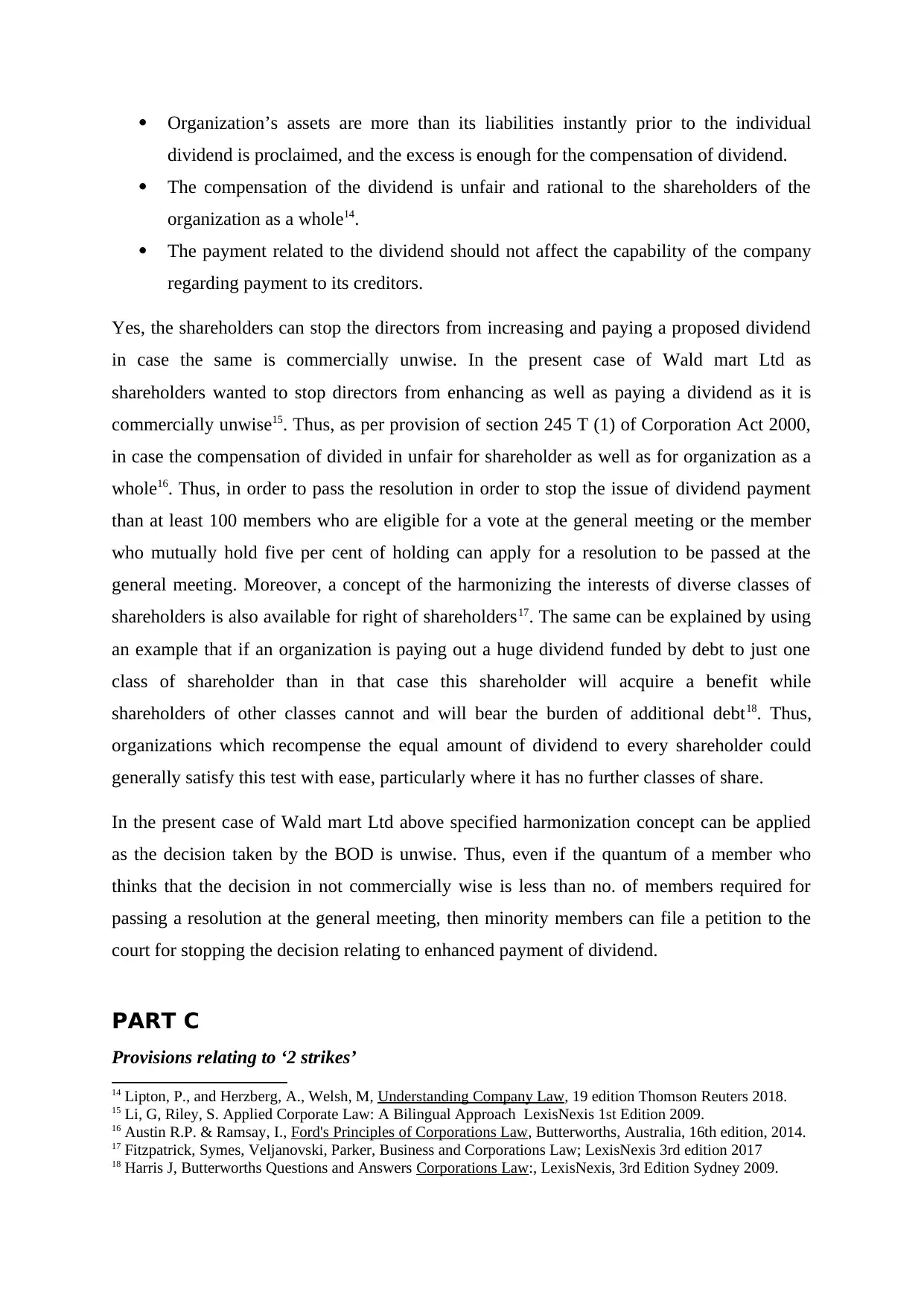
Organization’s assets are more than its liabilities instantly prior to the individual
dividend is proclaimed, and the excess is enough for the compensation of dividend.
The compensation of the dividend is unfair and rational to the shareholders of the
organization as a whole14.
The payment related to the dividend should not affect the capability of the company
regarding payment to its creditors.
Yes, the shareholders can stop the directors from increasing and paying a proposed dividend
in case the same is commercially unwise. In the present case of Wald mart Ltd as
shareholders wanted to stop directors from enhancing as well as paying a dividend as it is
commercially unwise15. Thus, as per provision of section 245 T (1) of Corporation Act 2000,
in case the compensation of divided in unfair for shareholder as well as for organization as a
whole16. Thus, in order to pass the resolution in order to stop the issue of dividend payment
than at least 100 members who are eligible for a vote at the general meeting or the member
who mutually hold five per cent of holding can apply for a resolution to be passed at the
general meeting. Moreover, a concept of the harmonizing the interests of diverse classes of
shareholders is also available for right of shareholders17. The same can be explained by using
an example that if an organization is paying out a huge dividend funded by debt to just one
class of shareholder than in that case this shareholder will acquire a benefit while
shareholders of other classes cannot and will bear the burden of additional debt18. Thus,
organizations which recompense the equal amount of dividend to every shareholder could
generally satisfy this test with ease, particularly where it has no further classes of share.
In the present case of Wald mart Ltd above specified harmonization concept can be applied
as the decision taken by the BOD is unwise. Thus, even if the quantum of a member who
thinks that the decision in not commercially wise is less than no. of members required for
passing a resolution at the general meeting, then minority members can file a petition to the
court for stopping the decision relating to enhanced payment of dividend.
PART C
Provisions relating to ‘2 strikes’
14 Lipton, P., and Herzberg, A., Welsh, M, Understanding Company Law, 19 edition Thomson Reuters 2018.
15 Li, G, Riley, S. Applied Corporate Law: A Bilingual Approach LexisNexis 1st Edition 2009.
16 Austin R.P. & Ramsay, I., Ford's Principles of Corporations Law, Butterworths, Australia, 16th edition, 2014.
17 Fitzpatrick, Symes, Veljanovski, Parker, Business and Corporations Law; LexisNexis 3rd edition 2017
18 Harris J, Butterworths Questions and Answers Corporations Law:, LexisNexis, 3rd Edition Sydney 2009.
dividend is proclaimed, and the excess is enough for the compensation of dividend.
The compensation of the dividend is unfair and rational to the shareholders of the
organization as a whole14.
The payment related to the dividend should not affect the capability of the company
regarding payment to its creditors.
Yes, the shareholders can stop the directors from increasing and paying a proposed dividend
in case the same is commercially unwise. In the present case of Wald mart Ltd as
shareholders wanted to stop directors from enhancing as well as paying a dividend as it is
commercially unwise15. Thus, as per provision of section 245 T (1) of Corporation Act 2000,
in case the compensation of divided in unfair for shareholder as well as for organization as a
whole16. Thus, in order to pass the resolution in order to stop the issue of dividend payment
than at least 100 members who are eligible for a vote at the general meeting or the member
who mutually hold five per cent of holding can apply for a resolution to be passed at the
general meeting. Moreover, a concept of the harmonizing the interests of diverse classes of
shareholders is also available for right of shareholders17. The same can be explained by using
an example that if an organization is paying out a huge dividend funded by debt to just one
class of shareholder than in that case this shareholder will acquire a benefit while
shareholders of other classes cannot and will bear the burden of additional debt18. Thus,
organizations which recompense the equal amount of dividend to every shareholder could
generally satisfy this test with ease, particularly where it has no further classes of share.
In the present case of Wald mart Ltd above specified harmonization concept can be applied
as the decision taken by the BOD is unwise. Thus, even if the quantum of a member who
thinks that the decision in not commercially wise is less than no. of members required for
passing a resolution at the general meeting, then minority members can file a petition to the
court for stopping the decision relating to enhanced payment of dividend.
PART C
Provisions relating to ‘2 strikes’
14 Lipton, P., and Herzberg, A., Welsh, M, Understanding Company Law, 19 edition Thomson Reuters 2018.
15 Li, G, Riley, S. Applied Corporate Law: A Bilingual Approach LexisNexis 1st Edition 2009.
16 Austin R.P. & Ramsay, I., Ford's Principles of Corporations Law, Butterworths, Australia, 16th edition, 2014.
17 Fitzpatrick, Symes, Veljanovski, Parker, Business and Corporations Law; LexisNexis 3rd edition 2017
18 Harris J, Butterworths Questions and Answers Corporations Law:, LexisNexis, 3rd Edition Sydney 2009.
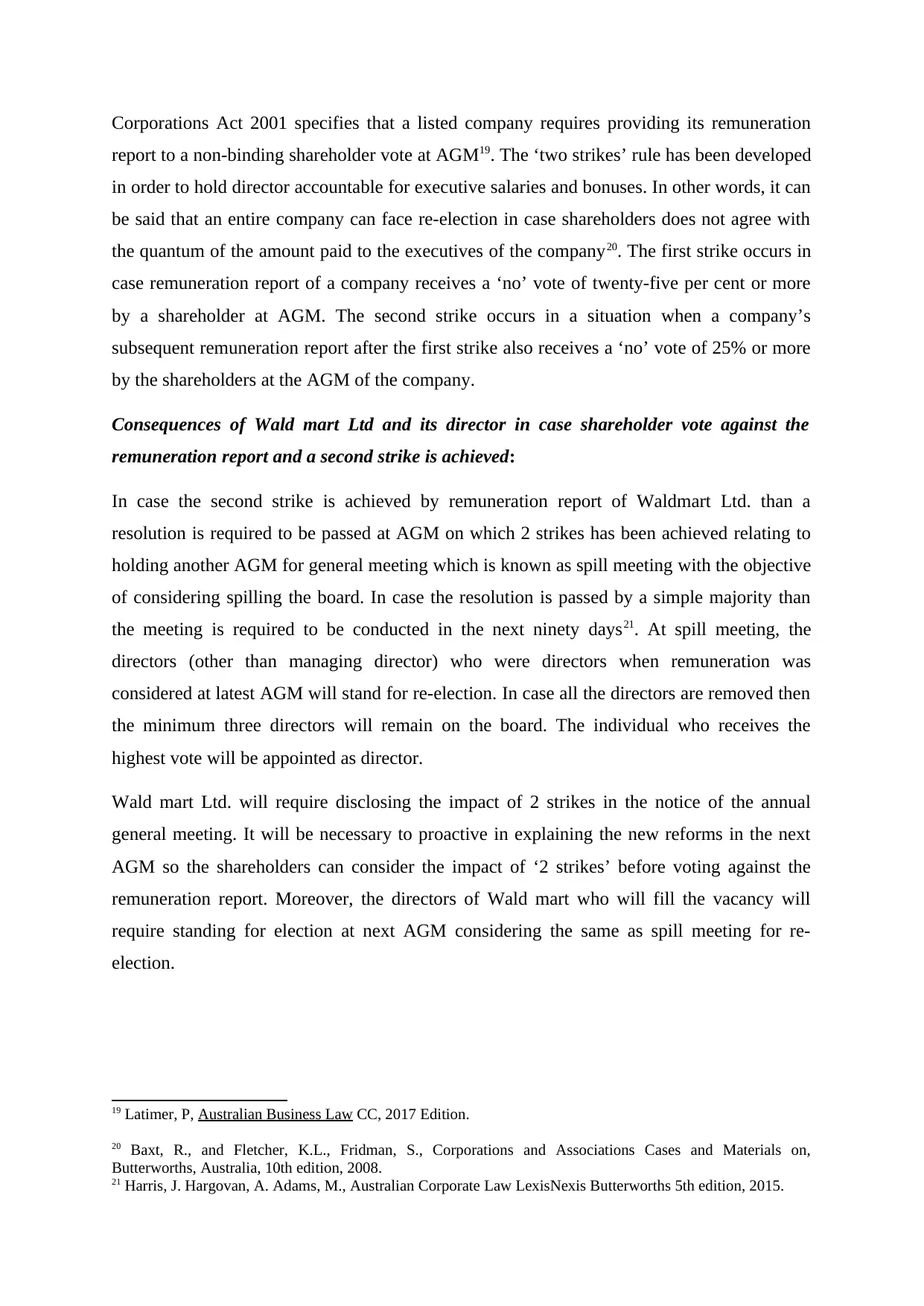
Corporations Act 2001 specifies that a listed company requires providing its remuneration
report to a non-binding shareholder vote at AGM19. The ‘two strikes’ rule has been developed
in order to hold director accountable for executive salaries and bonuses. In other words, it can
be said that an entire company can face re-election in case shareholders does not agree with
the quantum of the amount paid to the executives of the company20. The first strike occurs in
case remuneration report of a company receives a ‘no’ vote of twenty-five per cent or more
by a shareholder at AGM. The second strike occurs in a situation when a company’s
subsequent remuneration report after the first strike also receives a ‘no’ vote of 25% or more
by the shareholders at the AGM of the company.
Consequences of Wald mart Ltd and its director in case shareholder vote against the
remuneration report and a second strike is achieved:
In case the second strike is achieved by remuneration report of Waldmart Ltd. than a
resolution is required to be passed at AGM on which 2 strikes has been achieved relating to
holding another AGM for general meeting which is known as spill meeting with the objective
of considering spilling the board. In case the resolution is passed by a simple majority than
the meeting is required to be conducted in the next ninety days21. At spill meeting, the
directors (other than managing director) who were directors when remuneration was
considered at latest AGM will stand for re-election. In case all the directors are removed then
the minimum three directors will remain on the board. The individual who receives the
highest vote will be appointed as director.
Wald mart Ltd. will require disclosing the impact of 2 strikes in the notice of the annual
general meeting. It will be necessary to proactive in explaining the new reforms in the next
AGM so the shareholders can consider the impact of ‘2 strikes’ before voting against the
remuneration report. Moreover, the directors of Wald mart who will fill the vacancy will
require standing for election at next AGM considering the same as spill meeting for re-
election.
19 Latimer, P, Australian Business Law CC, 2017 Edition.
20 Baxt, R., and Fletcher, K.L., Fridman, S., Corporations and Associations Cases and Materials on,
Butterworths, Australia, 10th edition, 2008.
21 Harris, J. Hargovan, A. Adams, M., Australian Corporate Law LexisNexis Butterworths 5th edition, 2015.
report to a non-binding shareholder vote at AGM19. The ‘two strikes’ rule has been developed
in order to hold director accountable for executive salaries and bonuses. In other words, it can
be said that an entire company can face re-election in case shareholders does not agree with
the quantum of the amount paid to the executives of the company20. The first strike occurs in
case remuneration report of a company receives a ‘no’ vote of twenty-five per cent or more
by a shareholder at AGM. The second strike occurs in a situation when a company’s
subsequent remuneration report after the first strike also receives a ‘no’ vote of 25% or more
by the shareholders at the AGM of the company.
Consequences of Wald mart Ltd and its director in case shareholder vote against the
remuneration report and a second strike is achieved:
In case the second strike is achieved by remuneration report of Waldmart Ltd. than a
resolution is required to be passed at AGM on which 2 strikes has been achieved relating to
holding another AGM for general meeting which is known as spill meeting with the objective
of considering spilling the board. In case the resolution is passed by a simple majority than
the meeting is required to be conducted in the next ninety days21. At spill meeting, the
directors (other than managing director) who were directors when remuneration was
considered at latest AGM will stand for re-election. In case all the directors are removed then
the minimum three directors will remain on the board. The individual who receives the
highest vote will be appointed as director.
Wald mart Ltd. will require disclosing the impact of 2 strikes in the notice of the annual
general meeting. It will be necessary to proactive in explaining the new reforms in the next
AGM so the shareholders can consider the impact of ‘2 strikes’ before voting against the
remuneration report. Moreover, the directors of Wald mart who will fill the vacancy will
require standing for election at next AGM considering the same as spill meeting for re-
election.
19 Latimer, P, Australian Business Law CC, 2017 Edition.
20 Baxt, R., and Fletcher, K.L., Fridman, S., Corporations and Associations Cases and Materials on,
Butterworths, Australia, 10th edition, 2008.
21 Harris, J. Hargovan, A. Adams, M., Australian Corporate Law LexisNexis Butterworths 5th edition, 2015.
Paraphrase This Document
Need a fresh take? Get an instant paraphrase of this document with our AI Paraphraser
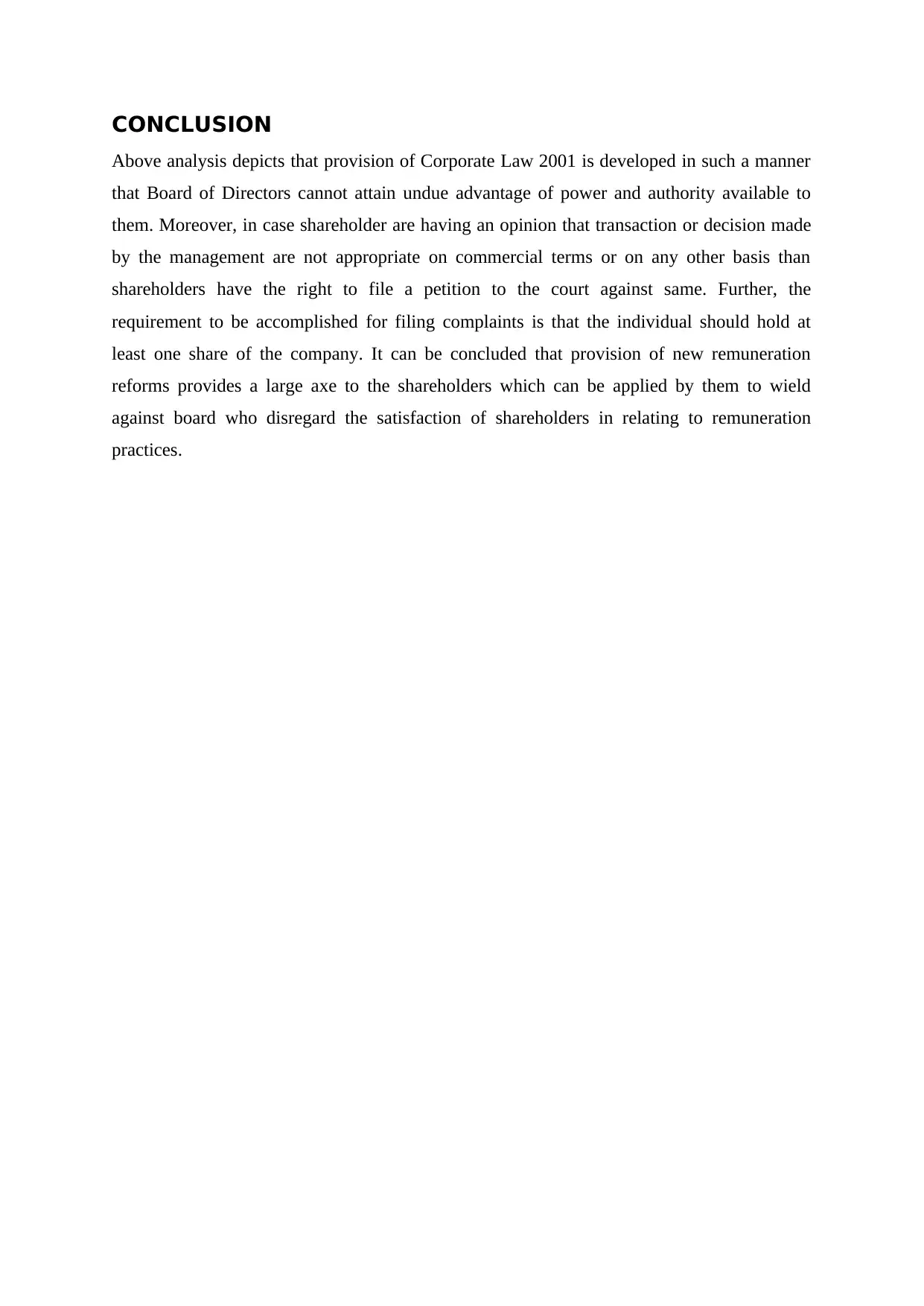
CONCLUSION
Above analysis depicts that provision of Corporate Law 2001 is developed in such a manner
that Board of Directors cannot attain undue advantage of power and authority available to
them. Moreover, in case shareholder are having an opinion that transaction or decision made
by the management are not appropriate on commercial terms or on any other basis than
shareholders have the right to file a petition to the court against same. Further, the
requirement to be accomplished for filing complaints is that the individual should hold at
least one share of the company. It can be concluded that provision of new remuneration
reforms provides a large axe to the shareholders which can be applied by them to wield
against board who disregard the satisfaction of shareholders in relating to remuneration
practices.
Above analysis depicts that provision of Corporate Law 2001 is developed in such a manner
that Board of Directors cannot attain undue advantage of power and authority available to
them. Moreover, in case shareholder are having an opinion that transaction or decision made
by the management are not appropriate on commercial terms or on any other basis than
shareholders have the right to file a petition to the court against same. Further, the
requirement to be accomplished for filing complaints is that the individual should hold at
least one share of the company. It can be concluded that provision of new remuneration
reforms provides a large axe to the shareholders which can be applied by them to wield
against board who disregard the satisfaction of shareholders in relating to remuneration
practices.
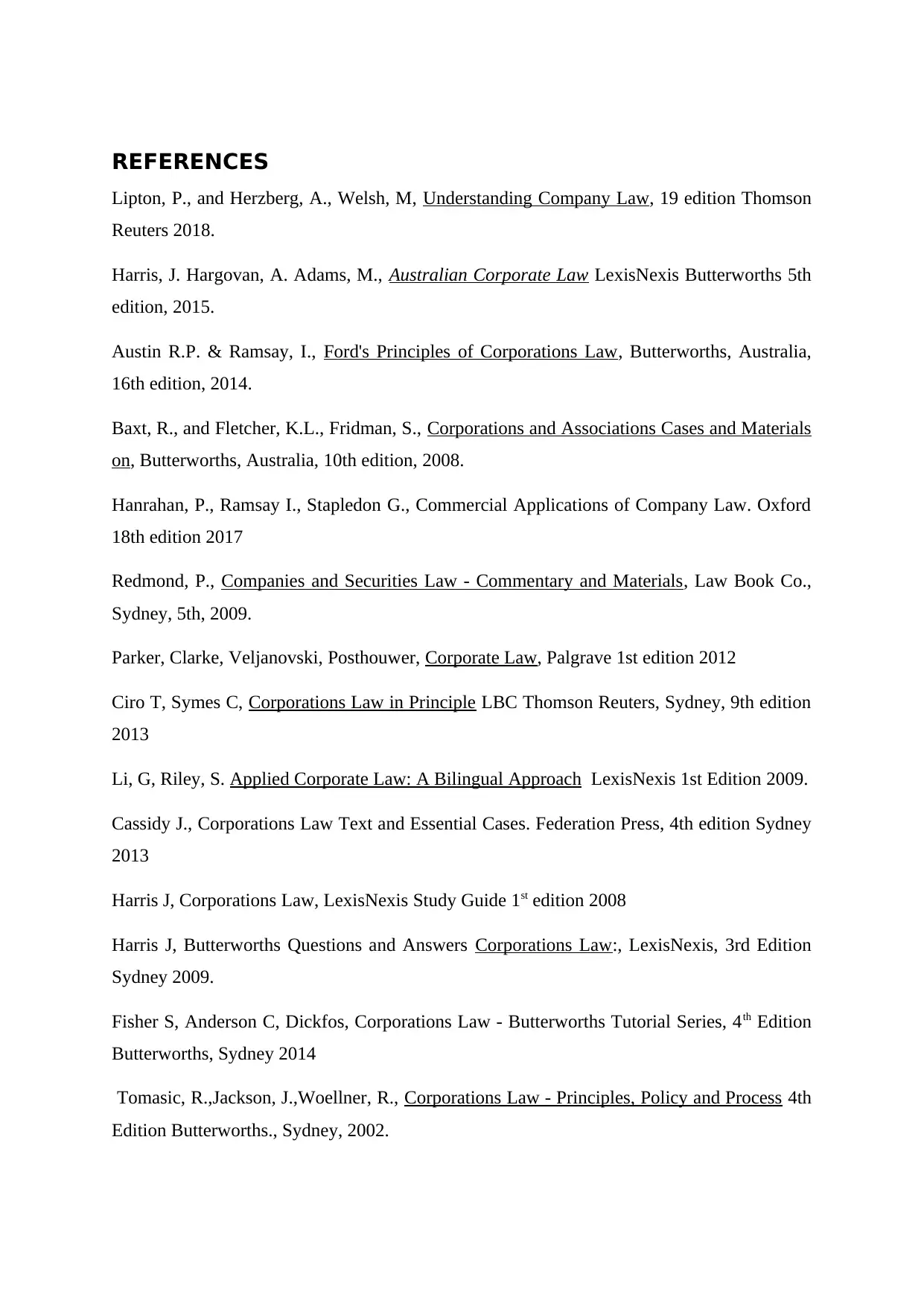
REFERENCES
Lipton, P., and Herzberg, A., Welsh, M, Understanding Company Law, 19 edition Thomson
Reuters 2018.
Harris, J. Hargovan, A. Adams, M., Australian Corporate Law LexisNexis Butterworths 5th
edition, 2015.
Austin R.P. & Ramsay, I., Ford's Principles of Corporations Law, Butterworths, Australia,
16th edition, 2014.
Baxt, R., and Fletcher, K.L., Fridman, S., Corporations and Associations Cases and Materials
on, Butterworths, Australia, 10th edition, 2008.
Hanrahan, P., Ramsay I., Stapledon G., Commercial Applications of Company Law. Oxford
18th edition 2017
Redmond, P., Companies and Securities Law - Commentary and Materials, Law Book Co.,
Sydney, 5th, 2009.
Parker, Clarke, Veljanovski, Posthouwer, Corporate Law, Palgrave 1st edition 2012
Ciro T, Symes C, Corporations Law in Principle LBC Thomson Reuters, Sydney, 9th edition
2013
Li, G, Riley, S. Applied Corporate Law: A Bilingual Approach LexisNexis 1st Edition 2009.
Cassidy J., Corporations Law Text and Essential Cases. Federation Press, 4th edition Sydney
2013
Harris J, Corporations Law, LexisNexis Study Guide 1st edition 2008
Harris J, Butterworths Questions and Answers Corporations Law:, LexisNexis, 3rd Edition
Sydney 2009.
Fisher S, Anderson C, Dickfos, Corporations Law - Butterworths Tutorial Series, 4th Edition
Butterworths, Sydney 2014
Tomasic, R.,Jackson, J.,Woellner, R., Corporations Law - Principles, Policy and Process 4th
Edition Butterworths., Sydney, 2002.
Lipton, P., and Herzberg, A., Welsh, M, Understanding Company Law, 19 edition Thomson
Reuters 2018.
Harris, J. Hargovan, A. Adams, M., Australian Corporate Law LexisNexis Butterworths 5th
edition, 2015.
Austin R.P. & Ramsay, I., Ford's Principles of Corporations Law, Butterworths, Australia,
16th edition, 2014.
Baxt, R., and Fletcher, K.L., Fridman, S., Corporations and Associations Cases and Materials
on, Butterworths, Australia, 10th edition, 2008.
Hanrahan, P., Ramsay I., Stapledon G., Commercial Applications of Company Law. Oxford
18th edition 2017
Redmond, P., Companies and Securities Law - Commentary and Materials, Law Book Co.,
Sydney, 5th, 2009.
Parker, Clarke, Veljanovski, Posthouwer, Corporate Law, Palgrave 1st edition 2012
Ciro T, Symes C, Corporations Law in Principle LBC Thomson Reuters, Sydney, 9th edition
2013
Li, G, Riley, S. Applied Corporate Law: A Bilingual Approach LexisNexis 1st Edition 2009.
Cassidy J., Corporations Law Text and Essential Cases. Federation Press, 4th edition Sydney
2013
Harris J, Corporations Law, LexisNexis Study Guide 1st edition 2008
Harris J, Butterworths Questions and Answers Corporations Law:, LexisNexis, 3rd Edition
Sydney 2009.
Fisher S, Anderson C, Dickfos, Corporations Law - Butterworths Tutorial Series, 4th Edition
Butterworths, Sydney 2014
Tomasic, R.,Jackson, J.,Woellner, R., Corporations Law - Principles, Policy and Process 4th
Edition Butterworths., Sydney, 2002.
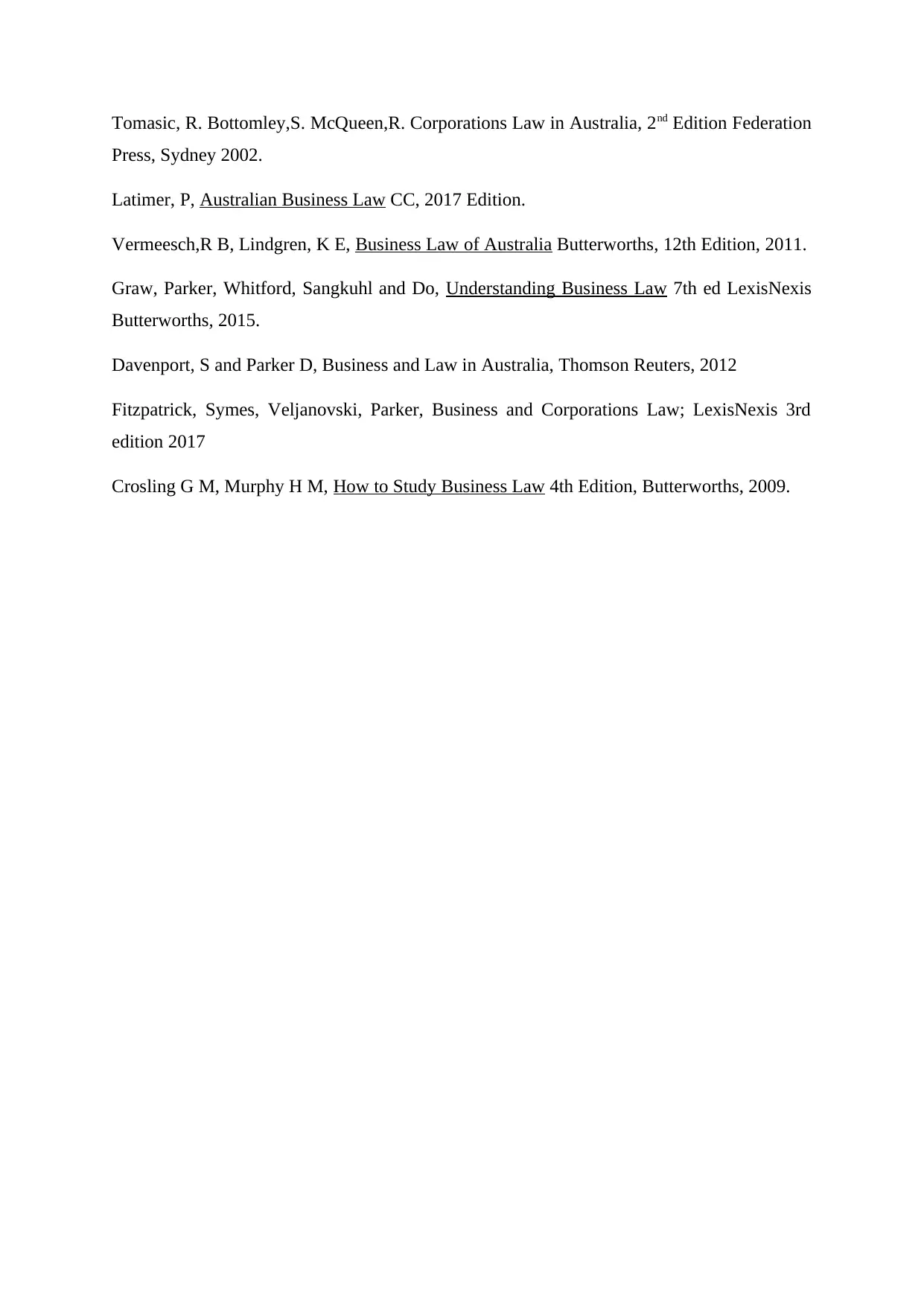
Tomasic, R. Bottomley,S. McQueen,R. Corporations Law in Australia, 2nd Edition Federation
Press, Sydney 2002.
Latimer, P, Australian Business Law CC, 2017 Edition.
Vermeesch,R B, Lindgren, K E, Business Law of Australia Butterworths, 12th Edition, 2011.
Graw, Parker, Whitford, Sangkuhl and Do, Understanding Business Law 7th ed LexisNexis
Butterworths, 2015.
Davenport, S and Parker D, Business and Law in Australia, Thomson Reuters, 2012
Fitzpatrick, Symes, Veljanovski, Parker, Business and Corporations Law; LexisNexis 3rd
edition 2017
Crosling G M, Murphy H M, How to Study Business Law 4th Edition, Butterworths, 2009.
Press, Sydney 2002.
Latimer, P, Australian Business Law CC, 2017 Edition.
Vermeesch,R B, Lindgren, K E, Business Law of Australia Butterworths, 12th Edition, 2011.
Graw, Parker, Whitford, Sangkuhl and Do, Understanding Business Law 7th ed LexisNexis
Butterworths, 2015.
Davenport, S and Parker D, Business and Law in Australia, Thomson Reuters, 2012
Fitzpatrick, Symes, Veljanovski, Parker, Business and Corporations Law; LexisNexis 3rd
edition 2017
Crosling G M, Murphy H M, How to Study Business Law 4th Edition, Butterworths, 2009.
1 out of 10
Related Documents
Your All-in-One AI-Powered Toolkit for Academic Success.
+13062052269
info@desklib.com
Available 24*7 on WhatsApp / Email
![[object Object]](/_next/static/media/star-bottom.7253800d.svg)
Unlock your academic potential
© 2024 | Zucol Services PVT LTD | All rights reserved.





